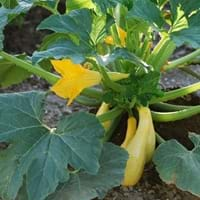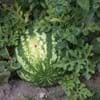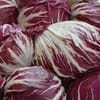Life Span
Annual
Perennial
Type
Vegetable
Flowering Plants, Shrubs
Origin
North America, Central America, South America
Africa, America, Asia
Types
Not Available
Lockinch, Petite Indigo, White Profusion
Number of Varieties
Not Available
Habitat
Not Available
Along Railroads, River side, Roadsides
USDA Hardiness Zone
Not Available
5-10
Sunset Zone
A1, A2, A3, H1, H2, 1a, 1b, 2a, 2b, 3a, 3b, 4, 5, 6, 7, 8, 9, 10, 11, 12, 13, 14, 15, 16, 17, 18, 19, 20, 21, 22, 23, 24
H1, 2a, 2b, 3a, 3b, 4, 5, 6, 7, 8, 9, 10, 11, 12, 13, 14, 15, 16, 17, 18, 19, 20, 21, 22, 23, 24
Habit
Prostrate/Trailing
Arching/Fountain-shaped
Flower Color
Yellow, Gold
Blue, Pink, Purple, Red, White
Flower Color Modifier
Bicolor
Not Available
Fruit Color
Yellow, Green, Orange, Gold, Salmon, Gray Green, Dark Green, Orange Red, Tan, Ivory
Not Available
Leaf Color in Spring
Green, Dark Green
Gray Green
Leaf Color in Summer
Green, Dark Green
Gray Green, Light Green
Leaf Color in Fall
Green, Dark Green, Yellow green
Gray Green, Light Green, Yellow green
Leaf Color in Winter
Not Available
Not Available
Leaf Shape
Heart-shaped
Egg-shaped
Plant Season
Summer, Fall
Fall, Spring, Summer, Winter
Sunlight
Full Sun
Full Sun, Part sun, Partial shade
Growth Rate
Very Fast
Fast
Type of Soil
Loam
Loamy, Sandy, Well drained
The pH of Soil
Neutral
Neutral, Slightly Acidic, Slightly Alkaline
Soil Drainage
Well drained
Well drained
Bloom Time
Indeterminate
Spring
Tolerances
Drought
Drought, Pollution, Salt, Soil Compaction
Where to Plant?
Container, Ground
Ground, Pot
How to Plant?
Divison
Seedlings, Stem Planting, Transplanting
Plant Maintenance
Medium
Medium
Watering Requirements
Do not water frequently
Form a Soil ring to water efficiently, Water Deeply, Water twice a day in the initial period
In Summer
Lots of watering
Lots of watering
In Spring
Moderate
Moderate
In Winter
Average Water
Average Water
Soil pH
Neutral
Neutral, Slightly Acidic, Slightly Alkaline
Soil Type
Loam
Loamy, Sandy, Well drained
Soil Drainage Capacity
Well drained
Well drained
Sun Exposure
Full Sun
Full Sun, Part sun, Partial shade
Pruning
Remove dead or diseased plant parts, Requires very little pruning
Cut or pinch the stems, Prune for shortening long shoots, Prune if you want to improve plant shape, Prune ocassionally, Remove damaged leaves, Remove dead or diseased plant parts, Remove deadheads, Remove shoots
Fertilizers
All-Purpose Liquid Fertilizer
All-Purpose Liquid Fertilizer
Pests and Diseases
Borers, Cucumber beetles, Mealybugs, Powdery mildew
Downy mildew, Leaf spot, Spider mites
Plant Tolerance
Drought
Drought
Flower Petal Number
Single
Single
Foliage Texture
Coarse
Medium
Foliage Sheen
Matte
Matte
Attracts
Not Available
Butterflies, Hummingbirds
Allergy
Not Available
Vomiting
Aesthetic Uses
Not Used For Aesthetic Purpose
Showy Purposes
Beauty Benefits
Not Available
Not Available
Environmental Uses
Air purification
Air purification
Medicinal Uses
Not Available
Not Available
Part of Plant Used
Fruits
Flowers, Leaves
Other Uses
Used as a nutritious food item, Used As Food
Showy Purposes, Used as Ornamental plant
Used As Indoor Plant
No
No
Used As Outdoor Plant
Yes
Yes
Garden Design
Edible, Herb / Vegetable
Edging, Feature Plant, Foundation
Botanical Name
CUCURBITA moschata
Buddleia davidii
Common Name
Butternut Squash, Cheese Pumpkin, Golden Cushaw Squash, Gourd, Pumpkin, Squash, Winter Crookneck Squash, Winter Squash
Butterfly Bush, Summer Lilac, Butterflybush
In Hindi
Crooknech squash
Butterfly Bush
In German
Crooknech squash
Schmetterlingsstrauch
In French
Crooknech squash
buisson de papillon
In Spanish
Crooknech squash
arbusto de las mariposas
In Greek
Crooknech squash
Butterfly Μπους
In Portuguese
Crooknech squash
arbusto de borboleta
In Polish
Crooknech squash
Butterfly Bush
In Latin
Crooknech squash
papilio rubo
Phylum
Magnoliophyta
Spermatophyta
Class
Magnoliopsida
Dicotyledonae
Family
Cucurbitaceae
Scrophulariaceae
Clade
Angiosperms, Eudicots, Rosids
Angiosperms, Asterids, Eudicots
Tribe
Cucurbiteae
Not Available
Subfamily
Cucurbitoideae
Not Available





